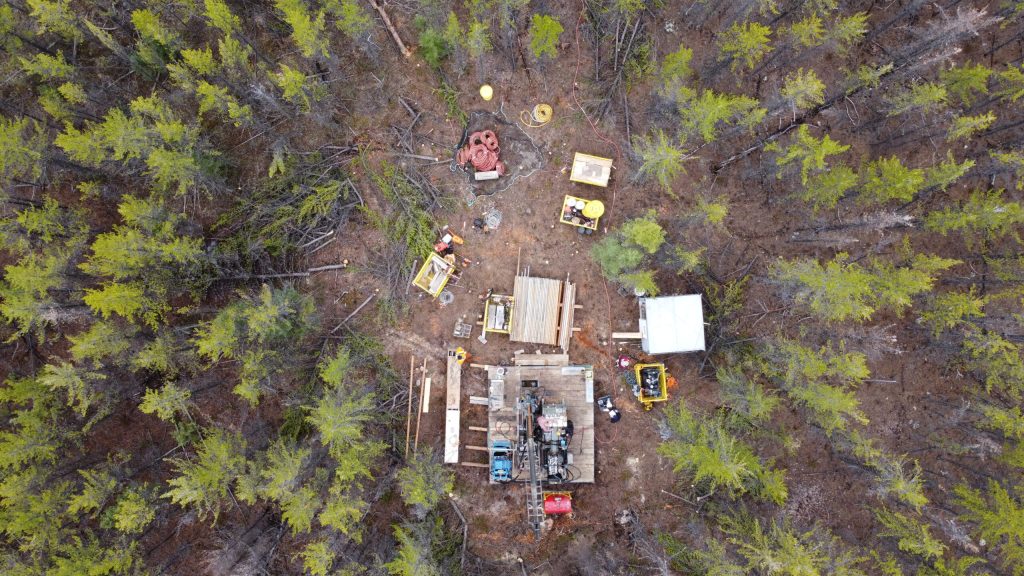Purepoint Uranium reports Tabbernor Project geophysical survey results, Saskatchewan

Purepoint Uranium Group Inc. [TSXV: PTU; OTCQB: PTUUF] reported initial results of its recently completed airborne FALCON gravity survey across the 81,817-hectare Tabbernor Project, located near the southeastern edge of Saskatchewan’s Athabasca Basin.
“The results of our FALCON gravity survey have provided a critical next step in refining priority targets at Tabbernor.” said Scott Frostad, Vice President Exploration at Purepoint. “We have now outlined three key areas showing favourable geology, complex structural features and potential hydrothermal alteration – strong indicators of uranium mineralization. Our next phase of work will focus on further refining these targets in preparation for drilling.”
Highlights: 7,549 line-km, airborne FALCON gravity and magnetic completed by Xcalibur Smart Mapping; three high-priority exploration zones identified, each displaying gravity low anomalies, suggesting potential hydrothermal alteration and uranium-bearing structures.
Follow-up prospecting and soil geochemistry programs are planned for summer 2024 to further define drill targets. Previous airborne electromagnetic surveys over the Tabbernor project have outlined over 70 km of EM conductors reinforcing the project’s potential.
Recent airborne electromagnetic surveys at the Tabbernor project have now defined over 70 km of EM conductors reinforcing the project’s potential to host large-scale uranium mineralization. The Central Conductive Trend, stretching 57 km, has emerged as the primary exploration target. Results from the FALCON gravity and magnetic survey indicate that these centrally located conductive rocks mark a key geological transition zone shifting from granitic rocks in the south to sedimentary rocks towards the north – a setting known to be favourable for uranium disposition.
The project area is structurally controlled by the Tabbernor Fault System, a deep-seated, regionally significant fault network linked to several uranium deposits to the north. The 2024 FALCON gravity survey has significantly enhanced the structural interpretation, identifying previously unrecognized faulting that could control uranium deposition.
Exploration efforts are now focused on three priority exploration target areas where airborne gravity data has identified low-density anomalies, potentially indication hydrothermal alteration – a key indicator of uranium mineralization. Summer 2025 exploration plans include prospecting, boulder sampling and soil geochemistry with results guiding follow-up ground geophysics and diamond drilling.
The 100%-owned Tabbernor Project is strategically positioned along three major trends of the Tabbernor Fault System, a deep seated, 1,500-km crustal shear system that runs north through the Athabasca Basin. The system not only hosts over 80 historic mines and gold occurrences but also crosscuts the Basin’s mine trend aligning itself with eight of the Basin’s largest uranium discoveries.
The Tabbernor project is roughly 40 km south of Cameco’s Eagle Point deposit and is comprised of 35 contiguous mineral claims covering an area of 81,817 hectares. The original three north-south claim groups that covered Tabbernor structures have now been expanded to include a strong east-northeast trending corridor of conductive rocks further enhancing the project’s exploration potential.
Purepoint’s current focus is the 57-km graphitic corridor that cuts through the project, specifically, areas with gravity low responses and showing evidence of structural complexity. Notably, recent drilling on an adjacent property intersected significant mineralization associated with the central Tabbernor graphitic structure.
The Tabbernor Fault System (TFS) is a wide, >1,500-km geophysical, topographic, and geological structural zone that trends approximately northward along Saskatchewan’s eastern boundary. Purepoint’s research has shown that although none of the province’s currently known uranium deposits have been linked to the north-south trending TFS, localized shear zones hosting uranium mineralization may have an associated north-south structural component.
Reactivation of the TFS may have coincided with the age of formation of large uranium deposits in the Athabasca Basin. Davies also concluded that structural similarities between the TFS and mineralized areas suggest that the fault system may have had a control on the location of mineralization. More specifically, he considered that several deposits, such as the Sue, Midwest, Dawn Lake and Rabbit Lake all demonstrate a north-south control and strong Tabbernor-like characteristics.
